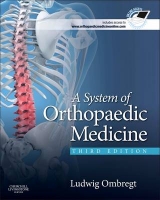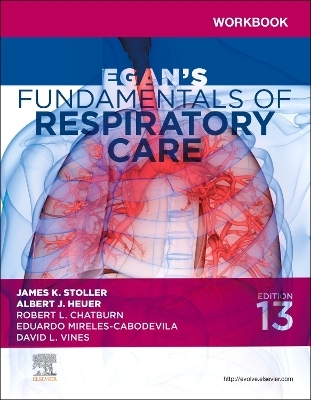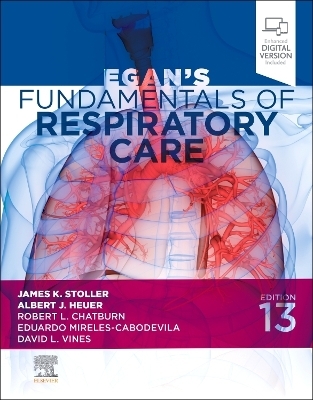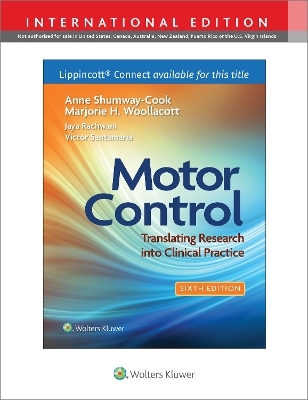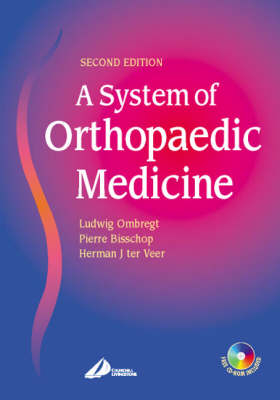
A System of Orthopaedic Medicine
Churchill Livingstone (Verlag)
978-0-443-07370-0 (ISBN)
- Titel erscheint in neuer Auflage
- Artikel merken
"A System of Orthopaedic Medicine" has established itself as an essential reference source for all those working in the field of musculoskeletal disorders. It describes a logical system of clinical examination of all musculoskeletal structures. By carefully following the examination sequence described, the clinician can be confident of arriving at an accurate diagnosis around which to plan the appropriate treatment. Originally based on the approach to orthopaedic medicine developed by James Cyriax, the book is relevant to any clinician concerned with the assessment and treatment of musculoskeletal pain. The system relies entirely on basic clinical skills and requires none of the apparatus usually found only in hospitals. For this reason it will be of particular value to family doctors, physiotherapists, rheumatologists, orthopaedic surgeons and those working in sports medicine. The treatments described are simple and have proved their effectiveness through time. For any treatment to be successful, accurate diagnosis must be followed by carefully focused therapy to the affected area.
For this reason, considerable detail is given on palpation of the anatomical structures and the correct performance of each therapeutic technique. The accurate assessment of the cause of musculoskeletal pain and dysfunction is one of the biggest challenges for clinicians today. In a society where everyone now wants to remain fit and active well into old age, practitioners and therapists are expected to be able to identify the cause of every ache and pain and then correct it. While this may not always be possible, those using this book will find that it helps them to identify the source of the problem more quickly and surely. "A System of Orthopaedic Medicine" is a book that no practitioner concerned with providing the most appropriate treatment and rehabilitation program for musculoskeletal disorders should ignore.
Ombregt is also the author of An Atlas of Orthopaedic Examination of the Peripheral Joints. He has also produced a series of CD Roms on the joints which he markets himself by mail and on the internet.. He and Bisschop are both well known internationally through their lectures and workshops.
Section 1. General Principles Pain. Pressure on nerves. Connective tissue. Clinical diagnosis of soft tissue lesions. General principles of treatment. Section 2. The cervical spine Applied anatomy of the cervical spine. Clinical examination of the cervical spine. Interpretation of findings. Disorders of the cervical spine. Mechanical disorders. Non-mechanical disorders. Other disorders. Whiplash injury. Treatment. Section 3. The shoulder Applied anatomy of the shoulder. Clinical examination of the shoulder. Interpretation of findings. Disorders of the inert structures. Disorders of the contractile structures. Disorders associated with a painful arc. A vascular disorder: subclavian steal syndrome. Section 4. The shoulder girdle Applied anatomy of the shoulder girdle. Clinical examination of the shoulder girdle. Interpretation of findings. Disorders of the inert structures. Disorders of the contractile structures. Disorders of the nerve tissue. Section 5. The elbow Applied anatomy of the elbow. Clinical examination of the elbow. Interpretation of findings. Disorders of the inert structures. Disorders of the contractile structures. Section 6. The wrist, thumb and hand Applied anatomy of the wrist, thumb and hand. Clinical examination of the wrist, thumb and hand. Interpretation of findings. Disorders of the lower radioulnar joint. Disorders of the wrist. Disorders of the thumb. Disorders of the hand and fingers. Section 7. Nerve Lesions and entrapment neuropathies of the upper limb Nerve lesions and entrapment neuropathies of the upper limb Section 8. The thoracic spine Applied anatomy of the thorax and abdomen. Clinical examination of the thoracic spine. Interpretation of findings. Disorders of the thoracic spine: disc lesions. Disorders of the thoracic spine: non-disc lesions. Disorders of the thoracic cage and abdomen. Ankylosing spondylitis of the thorax. Section 9. The temporomandibular joint Applied anatomy of the temporomandibular joint. Clinical examination of the temporomandibular joint. Interpretation of findings. Disorders of the temporomandibular joint. Section 10. The lumbar spine Introduction to the lumbar spine. Applied anatomy of the lumbar spine. Ageing of the lumbar spine. The dural concept. The ligamentous concept. The stenotic concept. Clinical examination of the lumbar spine. Interpretation of findings. Mechanical disorders of the lumbar spine: differential diagnosis. Non-mechanical disorders of the lumbar spine. Treatment of the lumbar spine. Section 11. The sacroiliac joint and coccyx Applied anatomy of the sacroiliac joint. Clinical examination of the sacroiliac joint. Interpretation of findings. Disorders of the sacroiliac joint. Anatomy and disorders of the coccyx. Section 12. The hip and buttock Applied anatomy of the hip and buttock. Clinical examination of the hip and buttock. Interpretation of findings. Disorders of the inert structures. Disorders of the contractile structures. Hip disorders in children. Summary of hip pain. Section 13. The knee Applied anatomy of the knee. Clinical examination of the knee. Interpretation of findings. Disorders of the inert structures: capsular and non-capsular patterns. Disorders of the inert structures: ligaments. Disorders of the contractile structures. Differential diagnosis of lesions at the knee. Section 14. The lower leg, ankle and foot Applied anatomy of the lower leg, ankle and foot. Clinical examination of the lower leg, ankle and foot. Interpretation of findings. Disorders of the lower leg. Disorders of the ankle and subtalar joints. Disorders of the midtarsal joints. Disorders of the forefoot and toes. Section 15. Nerve lesions and entrapment neuropathies of the lower limb Nerve lesions and entrapment neuropathies of the lower limb. Section 16. Psychogenic Pain Psychogenic pain. Appendix: Teaching facilities. Index. Accompanying CDRom in dual format (Mac/PC) CDRom containsapprox 30 mins of video clips demonstrating the investigations described in the text. The text is flagged at the appropriate points to direct the reader as to when there is a video clip to support what is written in the book. The CDRom also cross refers back to the relevant pages in the text.
| Erscheint lt. Verlag | 16.12.2002 |
|---|---|
| Zusatzinfo | 1322 ills. |
| Verlagsort | London |
| Sprache | englisch |
| Maße | 229 x 279 mm |
| Gewicht | 4260 g |
| Themenwelt | Medizin / Pharmazie ► Physiotherapie / Ergotherapie |
| ISBN-10 | 0-443-07370-8 / 0443073708 |
| ISBN-13 | 978-0-443-07370-0 / 9780443073700 |
| Zustand | Neuware |
| Haben Sie eine Frage zum Produkt? |
aus dem Bereich
